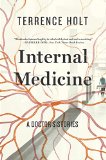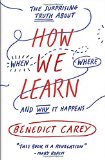Summary | Excerpt | Reviews | Beyond the book | Read-Alikes | Genres & Themes | Author Bio

A True Tale of Intrigue and Innovation at the Dawn of Modern Medicine
by Cristin O'Keefe AptowiczPhiladelphia might be known for splashy attractions such as The Liberty Bell or Independence Hall, but skipping the Mütter Museum would be a shame. To an average person, the collection of human anatomical oddities housed here might seem macabre and disturbing, but one surgeon, Dr. Thomas Dent Mütter (pronounced moo-tuh), routinely found the stories behind each to be powerful testaments to the capabilities of an honorable profession. "A human heart that was slowly transforming into bone; cancerous livers, a cancerous testicle so enlarged by its disease that a special case had to be built to contain it; tumors sliced from noses, throats." These are just a few that form the foundation of a remarkable collection of medical samples that the institute showcases.
As this brilliant biography shows, Dr. Mütter (1811-1859) was more than a professional who collected intriguing tissue specimens. His career followed a remarkable path from an orphaned boy in Virginia to a man with a razor-sharp intellect and a taste for fine clothes to one of the most transformative surgeons in the field of medicine.
With limited resources as a young adult, Mütter managed to find his way to Paris where he observed some of France's most brilliant surgeons in action. At the time, in the mid-nineteenth century, a new field of surgery, la chirgurie radical, was finding its feet in the city. The people who sought out this radical practice were often those who had been labeled "monsters" by society — faces mangled by fire and other disasters, outsized tumors making it impossible to lead normal lives. Upon his return to the United States, Mütter moved to Philadelphia, the American city where medical education was born. All was not smooth sailing for the young doctor. For one thing, the practice of medicine, especially in the hallowed halls of the medical school at the University of Pennsylvania, was very much for blue-blooded brahmins. Outsiders with questionable family backgrounds like Mütter were not easily welcome. Nevertheless his perseverance eventually led to him becoming the Chair of Surgery at Philadelphia's prestigious Jefferson Medical College.
Cristin O'Keefe Aptowicz paints a moving portrait of a surgeon who had ample doses of empathy, a doctor who could relate to the human being behind every disfigured face who sought him out. Mütter's story is even more remarkable given that the surgeons of the time worked without access to electricity or anesthesia. Imagine performing (or enduring) the most complicated surgeries with no numbing medication! To prepare his patients for surgery, Mütter would massage the body weeks in advance to get it primed for the scalpel. The 1800s were also a time of great upheaval in the United States, and Aptowicz ably places Mütter's life, not just in the context of some of the important changes in the practice of medicine (early versions of anesthesia made their appearance during Mütter's career), but also against a larger historical backdrop of slavery and the Civil War.
Aptowicz has said that she fell in love with her subject after a school field trip to the Mütter Museum. The book is interspersed with ink drawings of Mutter's patients and other relevant pictures, and is an exhaustive (if overly effusive) account, the culmination of more than a decade of research. While sections devoted to intricate surgeries (the descriptions will not make you queasy) are intriguing and informative, ones devoted to the internal machinations at the medical colleges are less so. Aptowicz paints a complete picture, background and all, of this remarkable man, but one wishes for less about the boards at the colleges and the white men who populated them. Nevertheless, their presence serves to remind the reader of the kinds of forces Mütter was fighting against — not just in terms of disease and history, but also amongst his colleagues, most of whom viewed the young surgeon as a young upstart at best. Eventually his work, over a very short life (he died at 47), would speak for itself. "Because of his care, Mütter's work and reputation rose above that of his contemporaries. He took on the abysmal realities of nineteenth-century medicine — the need to perform incredibly complex surgeries on patients who were wide-awake, in unsterilized environments that were lit only by candle, lamp, or daylight — yet he was able to heal the sick and restore the wasted and withered to strength and health."
Kindness and empathy are available in good measure in the world. So is intellect. But Mütter was a surgeon who had all these qualities in spades. Even better, as this biography shows, he had the integrity to stand up to creaky institutions and do what was right for his patients. Dr. Mütter's Marvels should serve to shine some well-deserved light on one of medicine's most important and revolutionary practitioners.
![]() This review was originally published in The BookBrowse Review in October 2014, and has been updated for the
October 2015 edition.
Click here to go to this issue.
This review was originally published in The BookBrowse Review in October 2014, and has been updated for the
October 2015 edition.
Click here to go to this issue.

If you liked Dr. Mütter's Marvels, try these:

by Terrence Holt
Published 2015
Out of the crucible of medical training, award-winning writer Terrence Holt shapes this stunning account of residency, the years-long ordeal in which doctors are made.

by Benedict Carey
Published 2015
In the tradition of The Power of Habit and Thinking, Fast and Slow comes a practical, playful, and endlessly fascinating guide to what we really know about learning and memory today—and how we can apply it to our own lives.
Don't join the book burners. Don't think you are going to conceal faults by concealing evidence that they ever ...
Click Here to find out who said this, as well as discovering other famous literary quotes!
Your guide toexceptional books
BookBrowse seeks out and recommends the best in contemporary fiction and nonfiction—books that not only engage and entertain but also deepen our understanding of ourselves and the world around us.